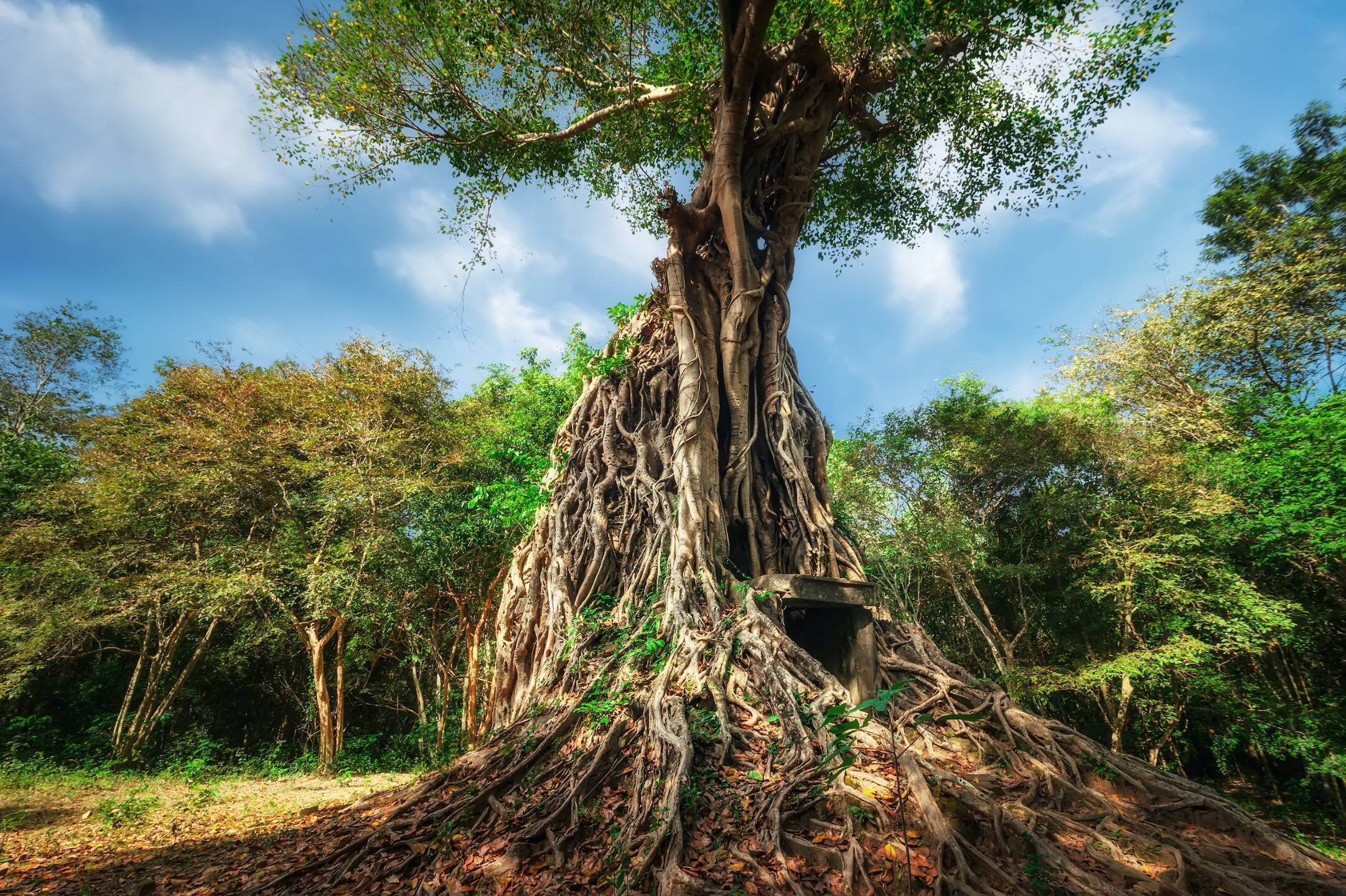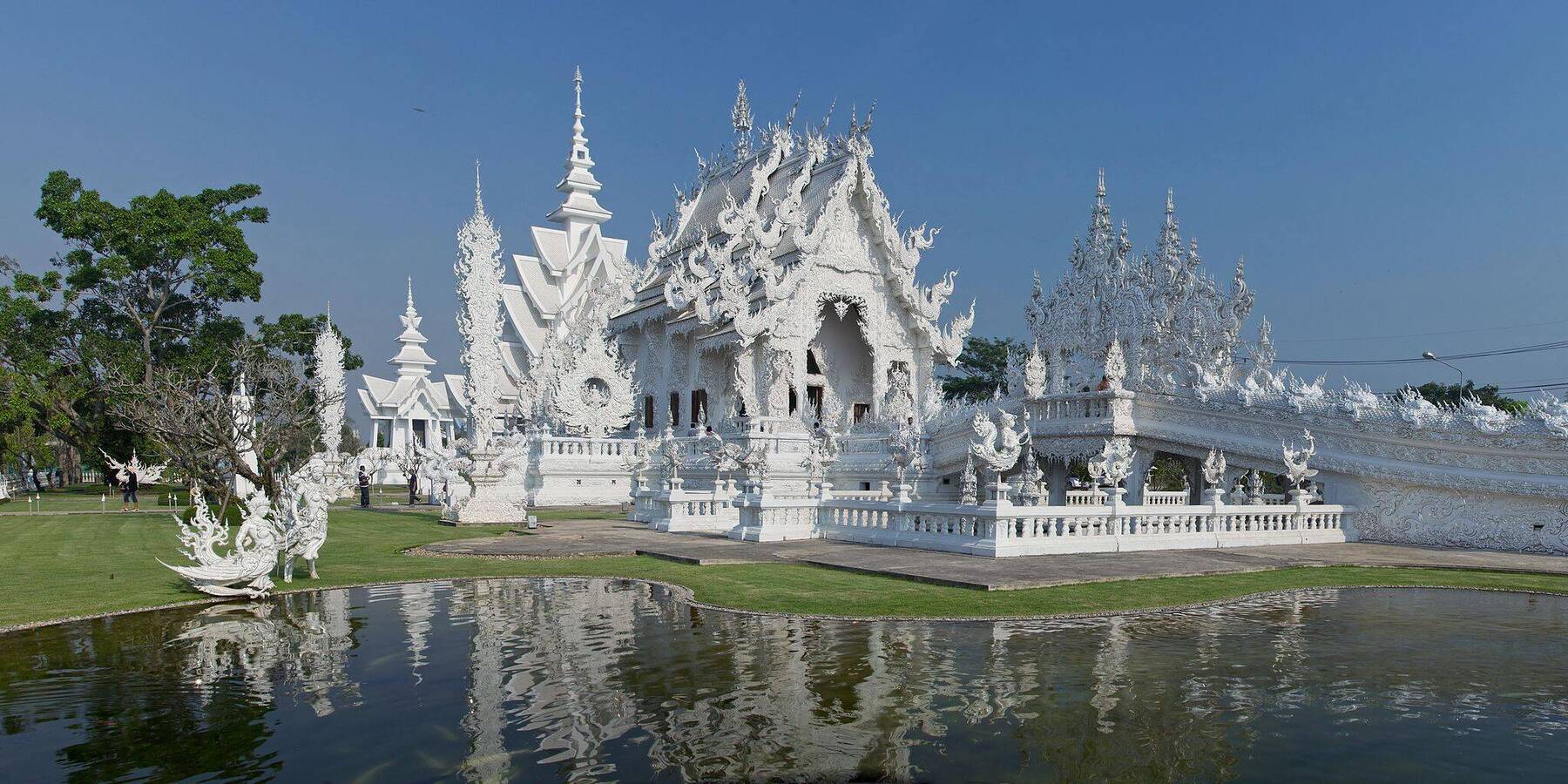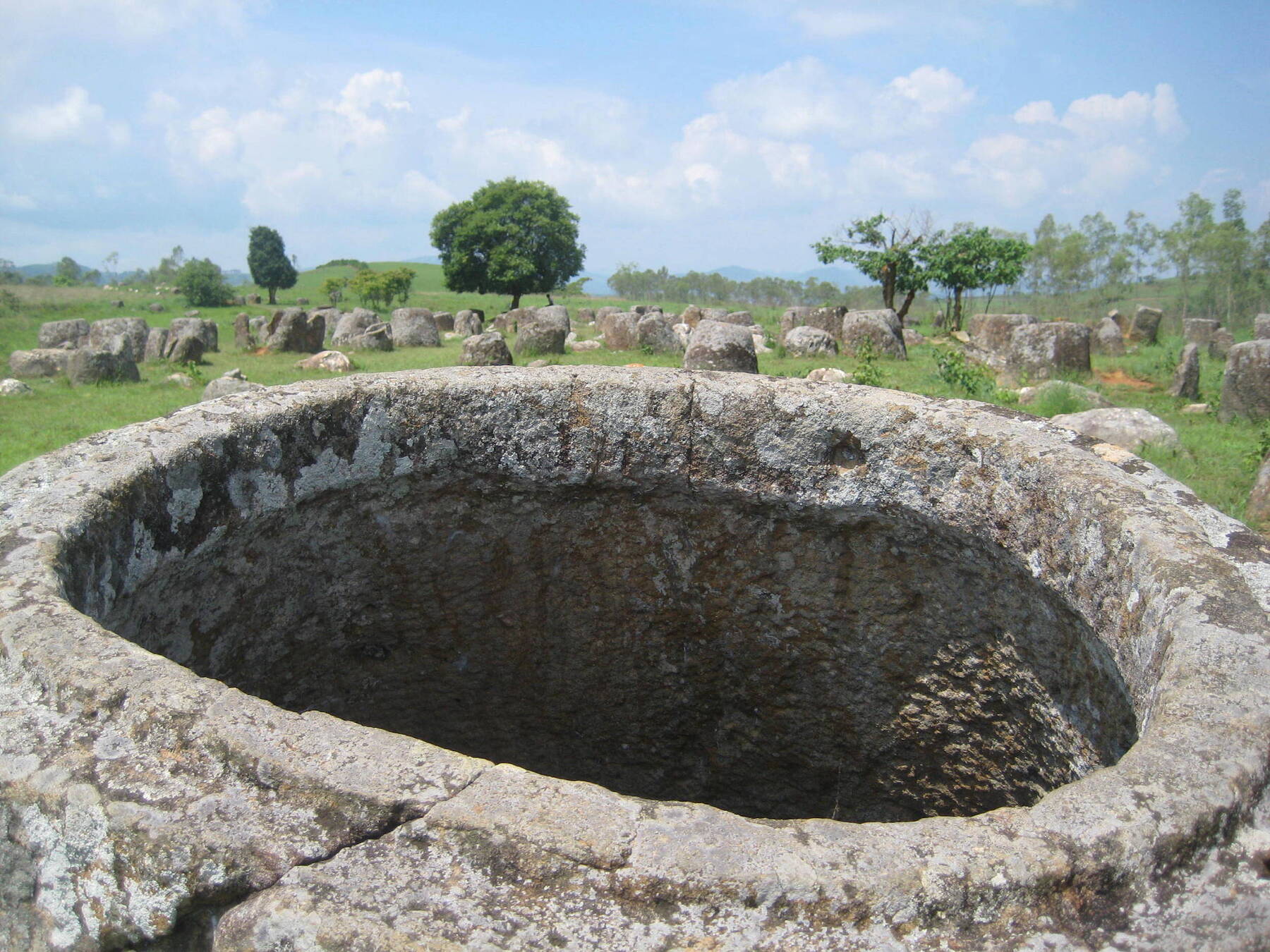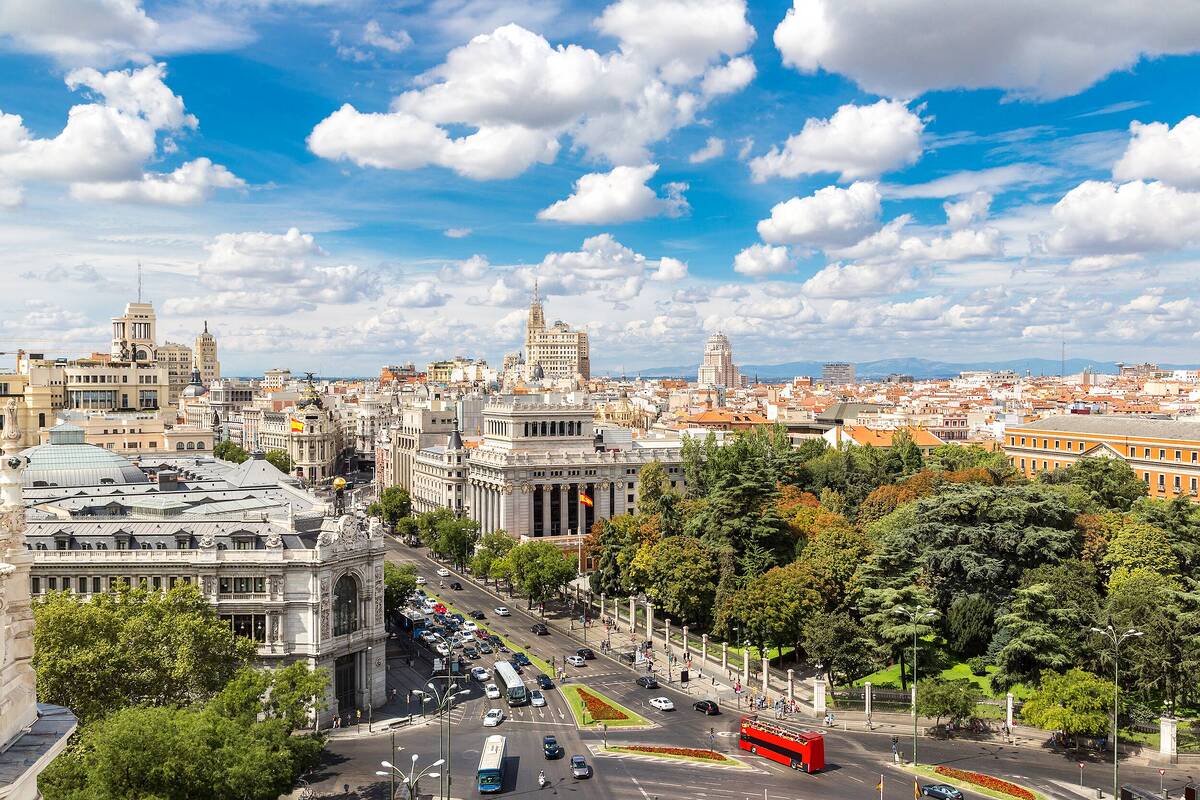Wat Rong Khun, Thailand
Essentially a modern art piece in the form of a working Buddhist temple, the White Temple was designed and is owned by renowned Thai artist Chalermchai Kositpipat, and is as beautiful as it is strange — and like Gaudi’s La Sagrada Familia the White Temple is a work in progress. From afar, it looks a little like a sugar-coated gingerbread temple. Or a petite white palace that seems to flow effortlessly between the iconic more subdued forms of Buddhist temples and the busier characteristics of Hindu temples, all set in a patch of elegantly manicured gardens. On closer inspection you’ll find dragon gargoyles, huge tusks forming cinematic gates, elephants with wings, various sculptures set on the banks of a small reflecting lake filled with Japanese Koi, and an unexpected horror film-esque pit of hands — some holding alms bowls, some with huge sharp claws and others with webbed fingers — reaching out from the ground in front of the bridge of "the cycle of rebirth”.
Explore inside the temple and things become stranger still. On the front walls, there are various psychedelic frescoes depicting pop-culture icons such as Batman, Superman, rockets surrounded by stars, the Predator and of course Keanu Reeves’ as Neo from The Matrix decked out in his long leather jacket, staring over at a gigantic mural of the Buddha and a hyper-realistic wax statue of a monk sat in the lotus position.






















Comments